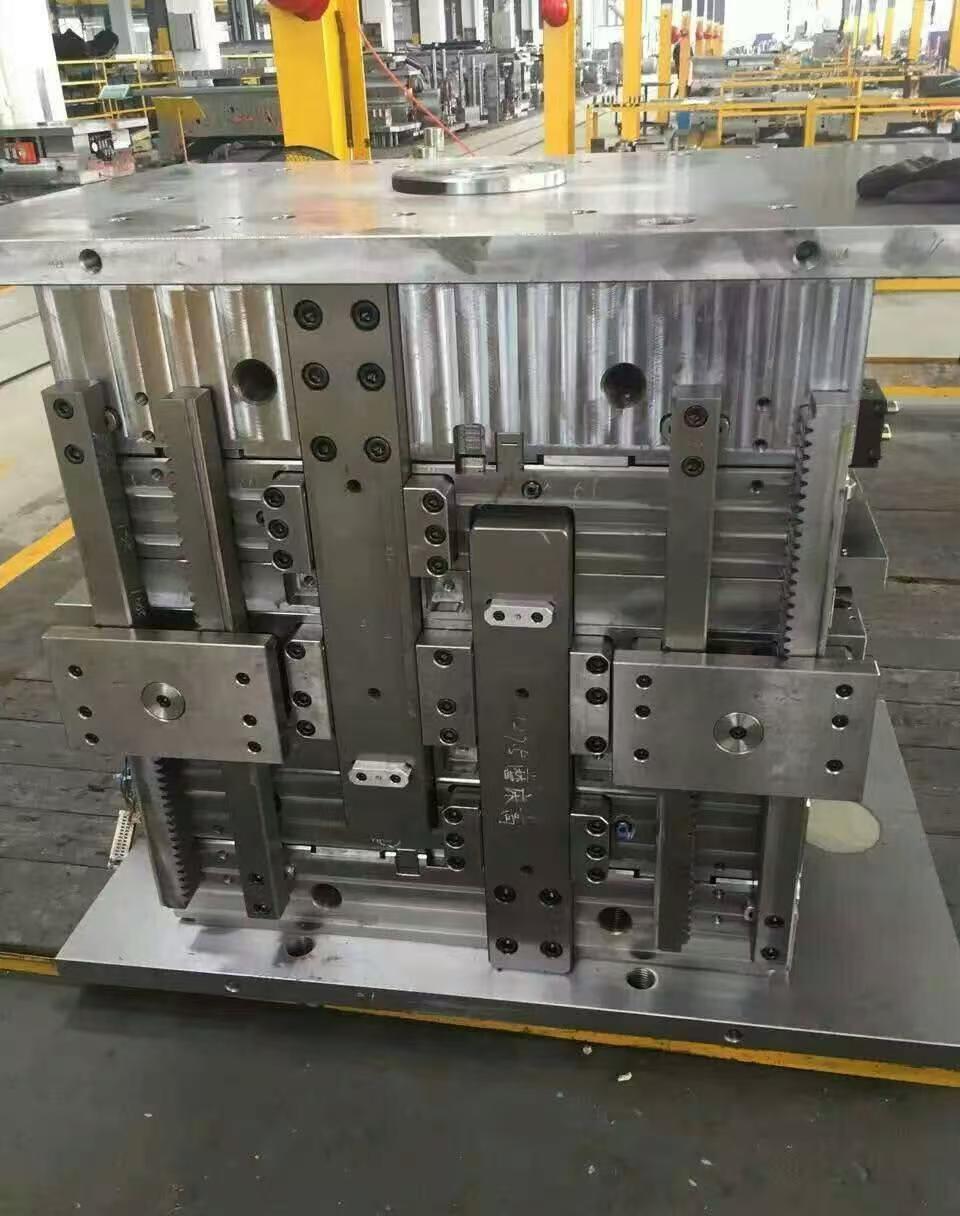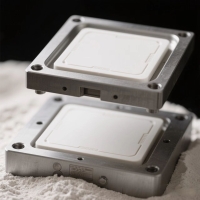สาเหตุและการแก้ปัญหาของริ้วสีเงินการเปลี่ยนสีระลอกพื้นผิวและความขรุขระในผลิตภัณฑ์แม่พิมพ์ฉีด
สาเหตุและการแก้ปัญหาของริ้วสีเงินการเปลี่ยนสีระลอกพื้นผิวและความขรุขระในฉีดขึ้นรูปสินค้า
ข้อบกพร่องของผลิตภัณฑ์ | เหตุผลที่เป็นไปได้ | สารละลาย | |
| รูปแบบเงินบนผลิตภัณฑ์ | 1. ปรับปรุงการผสมพลาสติกหรือเม็ดพลาสติกที่ไม่สม่ำเสมอการปลอมปนหรือสัดส่วนที่ไม่เหมาะสม 2. พลาสติกมีความชื้นในปริมาณสูงและมีสารระเหยต่ำผสม 3. มีอากาศจำนวนเล็กน้อยผสมลงในพลาสติก 4. กาวหลอมเหลวไม่ไหลอย่างต่อเนื่องในโพรงแม่พิมพ์ 5. มีความชื้นน้ำมันหล่อลื่นหรือการใช้สารปลดปล่อยเชื้อรามากเกินไปหรือไม่เหมาะสมบนพื้นผิวเชื้อรา 6. เมื่อแม่พิมพ์มีไอเสียที่ไม่ดีและวัสดุหลอมเหลวที่มีผนังบางไหลไปสู่ที่กำแพงหนามันจะขยายตัวและสารระเหยระเหยกลายเป็นไอและของเหลวเมื่อสัมผัสกับพื้นผิวเชื้อราเพื่อสร้างเส้นใยเงิน 7. อุณหภูมิแม่พิมพ์ต่ำความดันฉีดมีขนาดเล็กความเร็วในการฉีดช้าการเติมวัสดุหลอมเหลวช้าและการระบายความร้อนเร็วขึ้นทำให้เกิดแสงสีขาวหรือสีขาว 8. เวลาฉีดกาวสั้นเกินไป 9. เวลาการถือแรงดันสั้นเกินไป 10. อุณหภูมิพลาสติกสูงเกินไปหรือความดันด้านหลังสูงเกินไป 11. มีอุปสรรคหรือเสี้ยนที่มีผลต่อกระบอกสูบหรือหัวฉีด | 1. ควบคุมสูตรสัดส่วนพลาสติกอย่างชัดเจน วัสดุผสมควรมีความหนาสม่ำเสมอเพื่อให้แน่ใจว่าการทำให้เป็นพลาสติก 2. แห้งพลาสติกก่อนการผลิตเพื่อหลีกเลี่ยงการปนเปื้อน 3. ลดอุณหภูมิที่ปลายด้านหลังของกระบอกสูบหรือเพิ่มอุณหภูมิที่ปลายด้านหน้าของกระบอกละลาย 4. เมื่อปรับประตูตรวจสอบให้แน่ใจว่าเป็นสมมาตร กำหนดตำแหน่งประตูหรือรักษาอุณหภูมิแม่พิมพ์ 5. เช็ดให้แห้งความชื้นหรือคราบน้ำมันบนพื้นผิวของแม่พิมพ์และใช้ตัวแทนปล่อยแม่พิมพ์อย่างสมเหตุสมผล 6. ปรับปรุงการออกแบบแม่พิมพ์ควบคุมสัดส่วนและสูตรของวัตถุดิบพลาสติกอย่างเคร่งครัดให้มากที่สุดและลดมลพิษวัตถุดิบ 7. เพิ่มอุณหภูมิแม่พิมพ์เพิ่มแรงดันและความเร็วในการฉีดและขยายเวลาการระบายความร้อนและรอบการฉีดขึ้นรูป 9. เพิ่มค่าการตั้งค่าพารามิเตอร์สำหรับเวลาการฉีดและค่าการตั้งค่าพารามิเตอร์สำหรับเวลาการถือครองเวลา 10. เริ่มต้นจากหัวฉีดลดอุณหภูมิของกระบอกละลายหรือลดความเร็วของสกรูเพื่อลดความดันด้านหลังบนสกรู 11. ตรวจสอบถังและหัวฉีด ระบบ gating นั้นหยาบเกินไปและควรได้รับการปรับปรุงและปรับปรุง | |
| ผลิตภัณฑ์เปลี่ยนสี | 1.Impurities are mixed into plastic and pigments. 2. Plastic and pigment pollution or degradation, decomposition. 3. The quality of the pigment is poor or it is not stirred evenly during use. 4. The temperature of the barrel and the nozzle is too high, causing the rubber compound to burn and change color. 5. The injection pressure and speed were set too high, causing the additives and colorants to decompose. 6. There is moisture, oil stains on the surface of the mold, or mold release agents have been used .. 7. The distribution of fiber fillers is uneven. When the product comes into contact with the solvent, the resin dissolves, leaving the fibers exposed. 8. Obstacles in the glue melt cylinder promote the degradation of materials. | 1.When mixing materials, avoid mixing in any impurities. 2. The raw materials should be dry and the equipment clean. When changing materials, they should be thoroughly cleaned to avoid leaving any excess materials. 3. Ensure the quality of the pigments used. When stirring, the pigments should be evenly adhered to the surface of the material particles. 4. Lower the temperature of the glue cylinder and the nozzle to remove the charred glue. 5. Reduce the injection pressure and speed parameter values to prevent the decomposition of additives. 6. Dry the moisture and oil stains on the surface of the mold and use the mold release agent reasonably. 7. Set the process parameters of fiber fillers reasonably and use solvents properly to ensure good plasticization and eliminate fiber exposure. 8. Pay attention to eliminating obstacles, especially when changing materials, strictly follow the step-by-step procedures or use the transitional material change method. | |
| Corrugations on the surface of the product | 1.The small gate causes the rubber compound to spray inside the mold cavity. 2. The flow channel is tortuous, narrow, with poor smoothness and insufficient supply of rubber compound. 3. The cut surfaces of the products are uneven in thickness, large in area and complex in shape. 4. Improper mold cooling system or low mold temperature. 5. Low material temperature, low mold temperature or low nozzle temperature. 6. The injection pressure and speed Settings are too low. | 1.Modify the gate size or reduce the injection pressure. 2. Modify the flow channel and enhance its smoothness to ensure sufficient supply of the rubber compound. 3. Design the product to ensure uniform thickness of the cut surface, or remove the protruding discs and raised lines on the product. 4. Adjust the cooling system or add molds. 5. Increase the temperature of the glue melt cylinder and the nozzle. 6. Increase the set values of the injection pressure and speed parameters. | |
| The product is rough | 1.The mold cavity is rough and has poor smoothness. 2. Plastic meat contains excessive moisture or volatile substances, or plastic pigments have decomposed and deteriorated. 3. Insufficient feeding, poor curing or poor fluidity of the plastic. 4. There is moisture and oil stains on the mold wall. 5. Excessive use of mold release agent or improper selection. 6. The molten material in the mold cavity does not fully contact the cavity wall. 7. Slow injection speed and low pressure. 8. The draft Angle is small, resulting in poor draft or low surface hardness of the product, which is prone to scratches and wear. 9. Uneven particle size or the mixture of immiscible materials can cause uneven color, silver streaks, etc. | 1.Polish the mold cavity again. 2. Dry plastic raw materials, use recycled materials reasonably, and prevent impurities from being mixed in. 3. Check the condition of the discharge port and the plasticization of the plastic material, and then adjust the parameters. 4. Clean and repair water leakage cracks or prevent water vapor from condensing on the wall surface, and wipe off oil stains. 5. Select a small amount of mold release agent correctly to clean the mold. 6. It can be improved by increasing the injection pressure, raising the mold temperature and increasing the feed. 7. Increase the injection pressure and speed Settings, raise the melt temperature, and increase the back pressure. 8. Modify the mold slope, select the ejector pin parameters reasonably, and operate carefully. 9. When mixing materials, pay attention to the uniform size of the material particles to prevent other materials from entering by mistake. |
Car Mould_Taizhou jiefeng Mold Co.,Ltd. (jfmoulds.com)
สินค้า Mould_Taizhou jiefeng Mold Co.,Ltd. (jfmoulds.com)

ข้อมูลที่เกี่ยวข้อง
การออกแบบแม่พิมพ์พิเศษ
2025-07-24
การออกแบบแม่พิมพ์พิเศษ 1 แม่พิมพ์ซ้อนกันแม่พิมพ์ที่ซ้อนกันสร้างขึ้นพร้อมกันสร้างการฉีด ...
"ต้นแบบการสร้าง" ที่ซ่อนอยู่ในสิ่งจำเป็นในชีวิตประจำวัน
2025-07-17
"Shaping Master" ที่ซ่อนอยู่ในสิ่งจำเป็นในชีวิตประจำวันในผลิตภัณฑ์อุตสาหกรรมในปัจจุบัน...
เทคโนโลยีประตูแม่พิมพ์ฉีด
2025-07-23
Injection Mold Gate TechnologyGating Systemauto Mould_taizhou Jiefeng Mold Co., ...
ลักษณะการทำงานและเกณฑ์การเลือกของแม่พิมพ์ฉีด
2025-06-30
ลักษณะการทำงานและเกณฑ์การเลือกของแม่พิมพ์ฉีดนี้...
ความหลากหลายขององค์กรแม่พิมพ์ฉีด
2025-06-28
ความหลากหลายของแม่พิมพ์ฉีด enterprises1. แม่พิมพ์ยานยนต์: การขับขี่ฝุ่น...
ข้อบกพร่องทั่วไปของผลิตภัณฑ์หล่อขึ้นรูปและการแก้ปัญหาของพวกเขา
2025-07-29
ข้อบกพร่องทั่วไปของผลิตภัณฑ์หล่อขึ้นรูปและการแก้ปัญหาการวินิจฉัย ...





